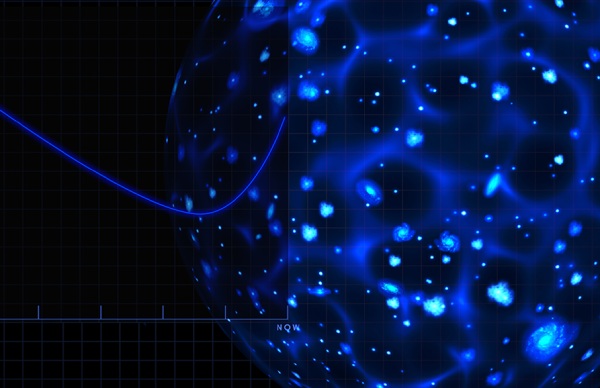The universe is a vast and mysterious place, filled with elements we can’t see but profoundly influence everything around us. Among these enigmatic forces are dark matter and dark energy, two concepts that have revolutionized our understanding of the cosmos and our place within it.
Dark Matter: The Invisible Architect
Imagine a cosmic scaffold that holds galaxies together without ever being seen. That’s dark matter for you! Making up about 27% of the universe, dark matter doesn’t emit or interact with light, which is why traditional telescopes can’t detect it. Its existence becomes evident through the gravitational effects it exerts on visible matter, like the rotational speeds of galaxies. When scientists observed that galaxies were rotating faster than expected, it became clear that an unseen mass was at play. Without dark matter, our universe would look very different, with galaxies unable to form or remain intact. This invisible force is crucial for understanding not just individual galaxies but the large-scale structure of the entire universe.
Dark Energy: The Great Accelerant
Now, let’s turn our gaze to dark energy, a mysterious force that accounts for roughly 68% of the universe. Discovered in the late 1990s, dark energy is responsible for the accelerated expansion of the cosmos. Picture this: rather than slowing down due to gravity, the universe is racing outward at an ever-increasing pace. This revelation has not only reshaped cosmology but has also left scientists pondering the ultimate fate of the universe. Will it continue to expand forever, leading to a cold, dark cosmos where galaxies drift apart? Or could it eventually reverse into a “big crunch”? These questions fuel ongoing research and debate in the scientific community.
Gravity: The Universal Glue
At the heart of these cosmic phenomena is gravity, the force that binds it all together. In the case of dark matter, gravity helps explain how unseen mass keeps galaxies intact. However, the implications of dark energy challenge our traditional understanding of gravity itself, especially on the grand scale of the universe. The relationship between these three elements—dark matter, dark energy, and gravity—creates a dynamic interplay that shapes the universe’s evolution and structure.
A Paradigm Shift in Cosmology
The interplay of dark matter and dark energy has led to the development of the Lambda Cold Dark Matter (ΛCDM) model, the leading framework in cosmology today. This model paints a picture of a universe filled primarily with these mysterious entities, prompting a flurry of research and exploration. Scientists are utilizing advanced technologies and experiments, from the Hubble Space Telescope to particle physics projects, to uncover the secrets of these cosmic players.
In addition to observational studies, theoretical physicists are working tirelessly to develop new models that integrate dark matter and dark energy into our broader understanding of physics. These efforts include exploring concepts like modified gravity theories and even the possibility of extra dimensions, which could provide insights into the fundamental nature of the universe.
The Quest for Understanding
As we delve deeper into the realms of dark matter and dark energy, we not only expand our knowledge of the universe but also challenge the fundamental laws of physics. The questions raised by these phenomena push us to explore further and dream bigger about our place in the cosmos. The quest for understanding is not just a scientific endeavor; it’s a journey that connects us to the very fabric of reality, prompting us to ask who we are and how we fit into this vast universe.







